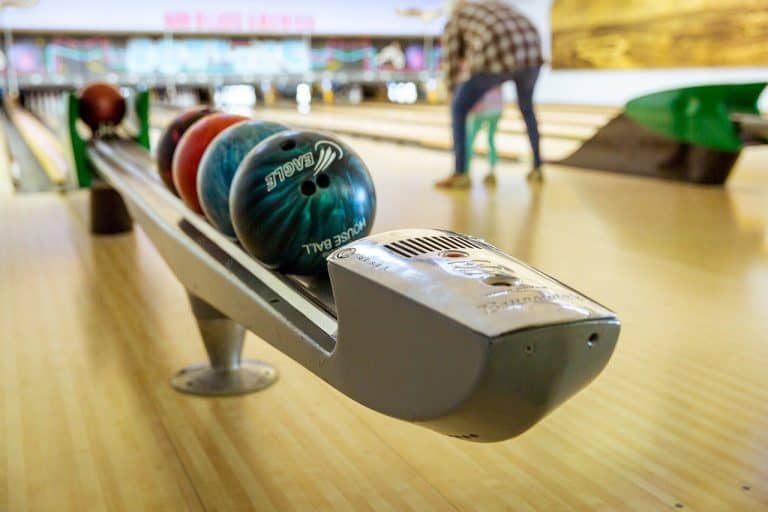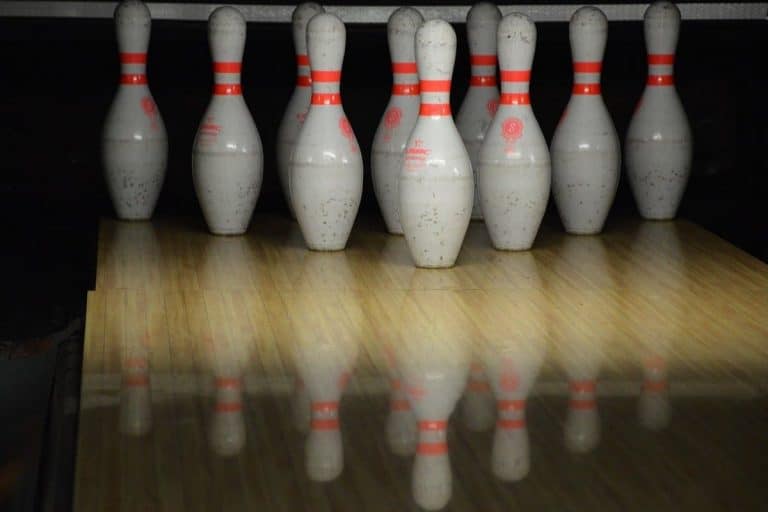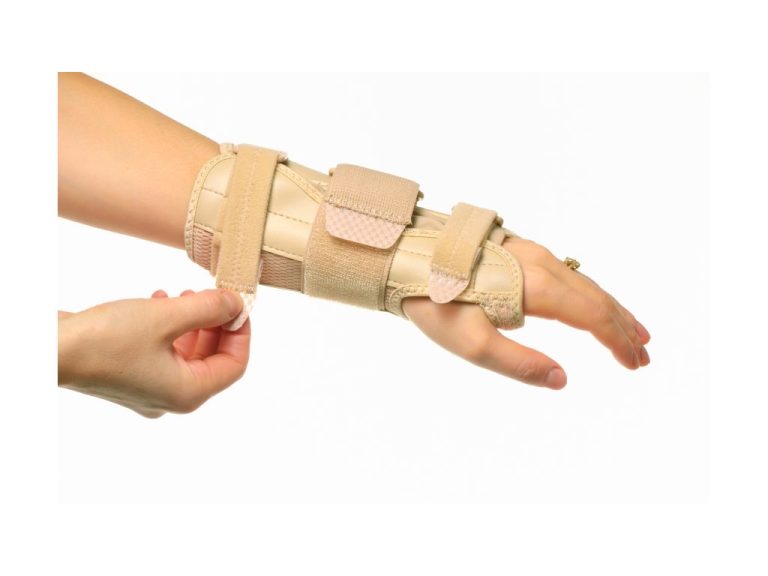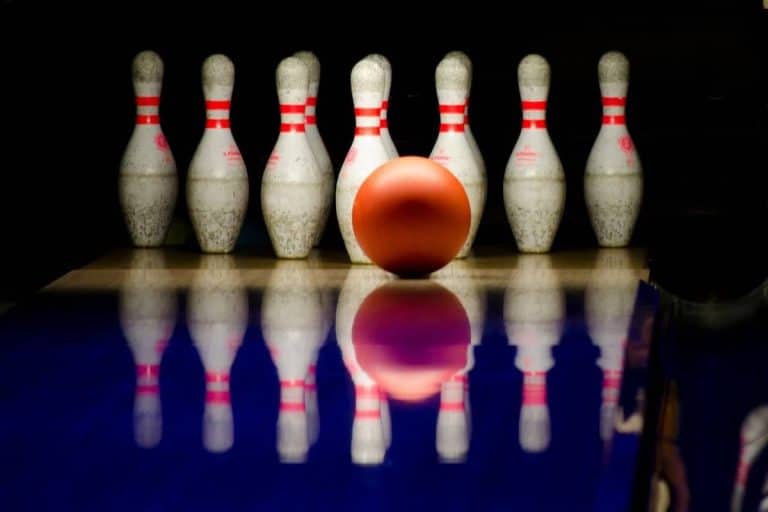Bowling Pin Anatomy: How They Are Made and Why
You may not give it much thought, but bowling pins are among the most important parts of a bowling game. Their sole purpose is to get hit by the bowling ball, fall, and get picked up, only to get hit again. But what makes these pins so strong that they get hit several times without breaking?
Bowling pins are made by gluing and clamping multiple hard maple wood pieces into an assembly, shaping the assembly on a lathe, and coating it with nylon or surlyn. Hard maple wood is used as the core material because of its high durability and distinctive sound when it crashes on the pin deck.
Read on to learn more about bowling and its history. You will also learn how bowling pins are made, what they are made of, and so much more.
What Are Bowling Pins Made Of?
Bowling pins were initially known as skittles or Kegels. The pins used in the early days were made from one block of solid rock maple. The pins were easy to manufacture and durable at that time. However, the wood had varying densities, making the weight of each pin difficult to standardize.
To make resetting pins more efficient, American Machine and Foundry obtained the patent to build an automatic pinsetter. This wasn’t an instant success, and the pin boys still had to reset the lanes. It was later found that the pins got easily damaged and cracked by the pin setting machine.
Modern Day Bowling Pin Construction
Vulcan Manufacturing addressed the problem with the pin’s coating in 1954. The company employed a different method of producing pins by sawing pieces of maple and gluing them together.
This design allowed them to adjust the pin’s weight and create pins with more edge grain to withstand the force of bowling balls and the damage from pinsetters.
Bowling pin construction is regulated by the United States Bowling Congress (USBC). As per the requirements, bowling pins must be made out of new, hard rock maple wood harvested from trees on or above the 45th parallel.
Trees in this region, which includes the northernmost states of the U.S, have a higher mineral concentration; hence they have a higher quality and lower density.
However, most modern-day bowling pins are made from synthetic maple approved by the appropriate bodies because of the scarcity of maple wood.
Bowling Pin Coating
In the past, when pins were made of just a single block of maple, they were coated with white lacquer. When the automatic pinsetter was introduced, there was a need to use a more durable coating. Ethyl cellulose was the first material found to solve the problem.
Coating a bowling pin with ethylcellulose involved a seven-layer process. A first layer is applied by immersing the pin into the material to the wood pores. The second layer helped to provide better adhesion for the rest of the five layers that would later be applied.
Today, the process has changed and the only materials used are nylon and DuPont’s Surlyn. The type of coating used on a pin determines the process that would be employed. Nylon is less expensive than Surlyn and is more forgiving when used in the molding process. But bowling pins must be first dipped in latex so that the nylon doesn’t crack.
Factors Manufacturers Consider When Designing a Bowling Pin
When designing a bowling pin, the most important factors manufacturers consider are durability, scoring, and sound. Let’s take a look at each factor separately.
Durability
Manufacturers of bowling pins use multi-piece cores and stronger coating materials to improve their durability. Single blocks of wood were less durable because, over time, the layers in a piece of wood would eventually flex and break since they all have the same shape.
With multiple pieces glued together, each piece will complement the others’ weak spots and reinforce them. It also gives it more edge grain on the outside of the pin, making it less prone to chipping and splitting when handled by an automatic pinsetter.
Scoring
The whole point of the game is to hit the pin with the ball and make it fall. The core material can affect this, and also affect the game’s score. Since the pin is meant to keep falling over and get picked up by the pinsetter, naturally, there would be concerns over the durability of the material the pin is made from.
So why not use a stronger material such as steel or titanium alloys? The problem is that most of these other materials are heavier than wood. This added weight would take the fun out of the game as the pin will not readily fall over when hit by the ball.
Sound
The distinctive sound of the pin is another reason for the use of hard maple wood. When a pin gets hit by a bowling ball and crashes over, the sound it makes is a big part of the game, and only maple wood can match that sound.
Bowling Pin Specifications
There are several bowling pin dimensions or specifications, depending on their size, length, width, weight, shape, and game style.
The United States Bowling Congress (USBC) sets the standards of the bowling pins. The standards have been adopted by the World Tenpin Bowling Association (now called World Bowling).
The specifications of a standard bowling pin are:
- Weight: Nothing less than 3 lbs., 6 oz. (1.5 kg) and not more than 3 lbs., 10 oz. (1.6 kg). The weight of a bowling pin is usually around 24% of the bowling ball used.
- Widest point: 4.75 inches (121 mm) wide.
- The diameter of the cup at the base: 3/4 inches (19 mm). The narrowest pin diameter is 1.8 inches (45.7 mm), which is about 10 inches (254 mm) above the base of a bowling pin.
- Base width: 2.25 inches (57 mm). The base diameter must not be less than 2 inches (51 mm).
- Height: 15 inches (380 mm) tall.
- Radius at base: 5/32 inches (3.99 mm).
These are some of the standard dimensions of bowling pins found in all styles of the game. Let’s take a look at the various pin dimensions for different types of bowling.
- 10-pin bowling pins are 4.75 inches (120.7 mm) W × 15 inches (381 mm) L. Its weight is 1.5 kg to 1.6 kg (3 lbs. 3 oz. to 3 lbs. 5 oz.).
- Candlepins are the tallest pins coming at 15.75 inches (400 mm) tall and 2.94 inches (74.7 mm) wide. Its weight is 1.1 kg (2 lbs. 8 oz.) each.
Parts of a Bowling Pin
A bowling pin is essentially made of hard rock maple wood pieces glued and clamped together, shaped on a lathe, coated with a material such as nylon, and covered with a protective gloss coat. Here’s what a bowling pin looks like after construction:
As you can see in the image above:
- The tip of the pin is called the crown.
- The thin area that’s tapered in below the top is called the neck. This area is where most breaks happen.
- The belly is the large protruded part toward the bottom end of the pin.
- The core is the center of the pin, and it is made up of several hard rock maple wood pieces.
- The skirt is the visible notch made at the bottom of the pin. A hard plastic ring is glued to the skirt after the pin has been coated.
Why Are Bowling Pins Shaped That Way?
Bowling pins have an almost-cylindrical shape with a wide bottom and narrow neck that tapers in but gradually widens to the top. This unique design is required by the USBC and must be employed by every manufacturer.
A bowling pin is shaped the way it is to give it the right kind of balance. With this design, when a bowling ball hits the pin and tilts it 10 degrees or more, it will cause it to fall over. Since the game’s main purpose is to make the pin fall to score points, this design facilitates this.
Also, the bowling pin’s design makes it easy for the automatic pinsetter to grab and rearrange the pins.
Why Do Bowling Pins Have a Hole in the Bottom?
During the manufacturing process of a pin, a hole is drilled in the center of the base ring. This hole is used to hold the pin in place when being shaped on the lathe. The center hole also becomes useful for centering the pin during the coating process.
The Manufacturing Process of a Bowling Pin
The construction of a bowling pin involves the gluing and clamping together of different maple wood pieces and then processing on the lathe. The maple lumber is left to dry in kilns for about 8 to 10 days before being transferred to the manufacturing facility.
When it gets to the manufacturing plant, multi-bladed automatic saws are used to cut the planks into strips and finally into blocks.
Building the Core of the Pin
- The core of a bowling pin is made by first creating the post. The post consists of 3 sections which are all maples 2.8125 in (7.14 cm) x 0.875 in (2.22 cm) x 15.5 in (39.3 cm). These sections combine to form a rectangular 15.5 in (39.3 cm) block.
- Eight strips of maple are glued together, each measuring 16 in (41 cm) x 0.875 in (2.22 cm) x 1.25 in (3.17 cm) to form a (18 cm) wide x 16 in (41 cm) board. This board is called the panel and is then shaped by an electric planer to flatten and even out its top and bottom surface.
- Next, a table saw is used to cut the panel in half into four pieces called cheeks, with two pieces being 3 in (8 cm) wide and the other two being 4 in (10.2 cm) wide. These pieces will be glued to the post to form the large protruded part on the pin called the belly.
- The two 3 in (8 cm) cheeks are first glued to the post. The whole assembly is clamped into a jig to ensure the maple pieces align correctly.
- When this assembly is dry, a planer shapes the post into a perfect 2.625 in (6.67 cm) square. It is then taken to a machine which weighs it, checks its density, and determines whether it needs to be adjusted further to align with the pin specifications.
- As the machine adjusts the weight of the assembly, it drills into the post continuously until the pin reaches the required weight range of 4 oz (113.4 g).
- When the assembly gets to the desired weight, the drilled holes are covered with the 4 in (10.2 cm) cheeks and glued in place. Again, the whole assembly is clamped into a jig.
- At this point, the core takes the shape of a bowling pin but in a square. It is then taken to a lathe and cut into the shape of a pin by a blade that looks like a bowling pin itself.
Coating the Pin
The pin can either be coated with nylon and DuPont’s Surlyn. However, the most common material used is nylon. Manufacturers mostly use a method known as injection molding to apply coating on bowling pins.
In injection molding, two halves of the pin are placed in a two-piece metal mold. If the coating material is nylon, the two halves are first immersed in latex to avoid nylon cracking. The steps are as follows:
- The core is placed into the mold, and the coating is applied under high pressure through openings in the mold. The high pressure helps to ensure that the coating is evenly applied.
- After the coating has been injected, water is passed through the tubes to cool the pin. Once it is cooled, the pin is separated from the mold, and the stalks and excess coating are trimmed off.
- The pin is weighed to ensure they fall within the weight specifications of 1.5 kg and 1.6 kg (3 lbs. 3 oz. and 3 lbs. 5 oz.).
- To further remove the excess coating and smoothen it, the surface of the pin is sanded. Markings such as the manufacturer’s emblem, neck markings, and the ABC/WIBC stamp are printed on the pin’s surface.
- Finally, the pin is sprayed with a protective gloss coat, and its bottom is trimmed flat. A plastic ring piece is then glued to the bottom of the pin.
How Are Bowling Pins Set Up?
Bowling pins are the targets of a bowling ball. These bowling pins tell or give different points in the frames of gameplay. In various bowling games, bowling pins are set up in unique ways to suit the particular game type. These different setups either make the game harder for some or easier for others.
This section will discuss how these bowling pins are set up for the different varieties of the game.
Ten-Pin Bowling Pin Setup
The ten-pin style is the most common form of bowling in America. This particular style of bowling is the most common bowling practiced around the world. The ten-pin features ten different sets of pins for the game. These pins are set at a distance of 60 feet (18.3 m) away from the foul line.
In this type of bowling, the pins typically weigh between 3 lbs 6 oz to 3 lbs 10 oz (1.5 kgs to 1.6 kgs). The ten bowling pins are arranged in a triangular manner of 4 rows. With one pin in the first row, two pins in the second row, three pins in the third row, and four pins in the last row.
Ten-pin bowling consists of ten rounds called frames. Each bowler gets two chances per frame to knock down all the pins.
If the bowler successfully knocks down all the pins on the first ball, it is called a strike. If there are some pins left standing, the bowler has another chance to hit them. If he successfully knocks down the remaining pins with his second roll, it is called a spare.
Nine-Pin Bowling Pin Setup
Nine-pin bowling (also referred to as Kegel) is set up and played very differently from ten-pin. The difference in nine-pin is not only because it is played with one less pin, but the players are in a team, and the arrangement of the pins is completely different from ten-pin bowling.
Unlike the ten-pin triangular setup, a nine-pin is set up in the form of a diamond. It consists of white and red bowling pins, with the red pin surrounded by the white pins in a diamond pattern.
Five-Pin Bowling Pin Setup
In this style of bowling, the number of bowling pins used for the game is five. Having an arrangement style different from the ten-pins and nine-pins, the five pins each have a rubber band around the middle, agitating their flight when hit.
The pins in five-pin bowling are arranged in a V-shape, and each pin is worth a unique number of points when hit.
Candlepin Bowling Pin Setup
The pins used in candlepin bowling have a height of 16 inches (40 cm). The setup of the candlepins is the same as that of the ten-pins—in a triangular pattern. The difference between ten-pin bowling and five-pin bowling is in the style of the pins and how the game is played.
Duckpin Bowling Pin Setup
In duckpin bowling, the rules are similar to ten-pin bowling. However, the pins used in duckpin bowling are shorter, thinner, and lighter than the pin used in ten-pin bowling. The size of the pin makes it more difficult for bowlers to hit them with the ball. As a result, bowlers are allowed three rolls per frame, just like in candlepin bowling.
How Long Does a Bowling Pin Last?
The lifespan of a bowling pin depends on its quality and how it is maintained. There are usually at least two sets of bowling pins in a bowling center. Having an extra set allows the operator to rotate them out during the bowling season so one set can rest when the other is in use.
The lane condition and the type of bowling ball used in bowling games also affect how long a pin can last. If constantly rotated and regularly maintained, a pin will last for up to 6 months if consistently used for 30 games per day.
Similarly, a pin used consistently for 60 games per day will last for four months. A pin will only last for four months if used consistently for 90 games per day. A single bowling game lasts for about 10 minutes per person. Generally, a pin can last longer than that, but the quality of play will suffer.
Most bowling centers will give an old pin to a child or lucky adult. At that point, the pin is no longer suitable for use in bowling games. If the pin isn’t given out to anyone, the bowling center will discard it as it will break within another six months.
How Are Bowling Pins Maintained?
Because of the constant hits from bowling balls and the impact and grit from pinsetters on bowling pins, they’re bound to age at one point. Also, dust and grit on the pin deck and in the pit can cause premature wear of the pin’s clear outer coat.
The USBC regulates maintenance procedures for bowling pins. Some of the materials approved for cleaning bowling pins are soft cloth and sponge, waterproof gloves, and pin rack with pegs.
Steel wool, sandpaper, and coating materials are also allowed, but they must meet USBC specifications. There are also pin cleaning machines that make maintenance easier.
Regular cleaning and maintenance increase a pin’s life and ensures it slides better through the pinsetter. Typically, bowling centers clean their pins at least once or twice a month.
History of Bowling
The history of bowling is quite deep and interesting. It is not exactly clear where or when bowling started but research points back to thousands of years ago. Here’s a little bit of a history lesson on your favorite sport:
Who Invented Bowling?
According to historians and anthropologists, the bowling game was invented around 3200 BC. The reference comes from an English archeologist, Sir William Flinders Petrie, who found an Egyptian child’s grave containing a set of miniature pins and balls.
Another claim was made by William Pehle, who believed that the game was first played in Germany at about 300 A.D. Around that time, the game was used as a religious ritual where they rolled a rock into a kegel to cleanse themselves from their sins. Bowlers were then referred to as keglers because of this practice.
The bowling game soon spread across the world in various forms. It was introduced to England in 1299 in the city of Southampton. There is some proof about this as the Master’s Close (now called the Southampton Old Bowling Green), where it was first played, is still in existence.
Bowling eventually got an official mention in England when King Edward III banned it in 1366, calling it a distraction from his troops’ archery practice. However, the game was allowed back into the country and was turned into an all-weather game in 1455.
Bowling is reported to have first appeared in America in the early 1800s. In 1840, the first indoor bowling alley, the Knickerbocker Alleys, was built and opened in New York. There were no rules or specifications guiding bowling at that time, and there were several variations of the game.
However, in 1895, the American Bowling Congress (ABC) was formed, and the modern standardized rules were established. Women also got more involved in the game, and in 1907, the first women’s lawn bowl association, the Victorian Ladies’ Bowling Association, was formed.
With women’s involvement in the sport growing, the Women’s International Bowling Congress (WIBC) was formed in 1916. In 2005, both the ABC and WIBC merged to form the United States Bowling Congress (USBC).
Participating Countries
Bowling has become a recognized sport and means of entertainment all over the world. The sport first appeared in the Olympics in South Korea in 1988. The game featured the 10-pin bowling type in the completion. In 2015, it was added to the list of sports to be featured at the 2020 Olympics in Tokyo.
Today, the sport is played in more countries around the world by over 95 million bowlers. It’s more famous in countries such as the USA, United Kingdom, Sweden, Finland, Australia, Colombia, Germany, and Korea.
Conclusion
Bowling pins can withstand all those nasty knocks from bowling balls because of the material they are made of. Hard rock maple is a highly durable material and has remained the core material of bowling pins for more than 200 years.
Several tests and experiments have been carried out with other materials such as plastic, aluminum, and magnesium, but maple has remained the top choice because of its durability, scoring range, and the unique sound the pin makes when crashing.
Sources
- GoBowling Alley: Bowling Pin Dimensions and Layout of the Bowling Pin Rack
- Bowling Boards: Facts Of Bowling Pin History
- Wikipedia: Bowling pin
- Wikipedia: Bowling
- Play Bowling: How it’s made – Bowling Pins
- Hobby Seekers: What Are Bowling Pins Made Of?
- Bowling Guidance: What are Bowling Pins made of and How?
- Made How: Bowling Pin
- Wikipedia: Candlepin bowling
- Wikipedia: Five-pin bowling
- Wikipedia: Ten-pin bowling
- Wikipedia: Duckpin bowling
- Wikipedia: Nine-pin bowling
- Creative Mechanisms: Everything You Need To Know About Injection Molding
- The Wood Database: Hard Maple
- Canisius: Medieval Bowling
- Mental Floss: In 16th Century England, Bowling Was Only Legal on Christmas Day
- Encyclopedia: Bowling
- Olympic Channel: Is bowling an Olympic sport?
- Bowling Museum: History of Bowling
- Wisconsin 101: The Vulcan Corporation






